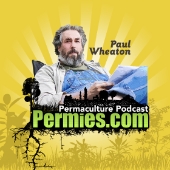and if so, can they un-do it
http://www.newscientist.com/article/mg22730284.200-did-humans-do-this-mystery-of-weird-amazonian-savannah-solved.html#.VZa-HflVikp
Did humans do this? Mystery of weird Amazonian savannah solved
WHAT is a vast grassland doing in the middle of the world's largest rainforest? Conservationists say that fires started by the indigenous Pemón people have destroyed the forests that should naturally blanket the area, and that fires should be banned. Others argue that the savannah has existed for millennia and that the fires conserve this natural landscape. Both could be wrong.
New research shows that human fires did help shape the landscape, but only after a portion had already become savannah. Some think that burning land could even help protect the remaining forest.
The Gran Sabana looks like an anomaly. It's part of a 68,000 square kilometre island of savannah in the lush rainforests where Venezuela meets Brazil and Guyana (see map). There have been many different theories about how it formed in a region where the climate favours rainforests, and plenty involve fire."
...................................
"Savannahs in general predate human activities," says Colin Hughes at the University of Zurich in Switzerland. Hughes says this is evidence that such grassy regions developed through a set of feedback loops between climate, natural fires and vegetation.
Rull's team also found that the savannah expanded dramatically after the arrival of humans – and peaks in the quantity of ancient charcoal trapped in the lake sediments suggests human fires may have played a role.
However, fires lit by humans might not shoulder all the blame. A rapid extinction of large grazing animals caused by hunting might have meant uneaten grass building up in the small savannah patches. This would then burn uncontrollably and destroy forests if set alight by, say, a lightning strike.
So, rather than threatening the forests, human fires might be vital for saving them, says Rodríguez. Experiments on the Gran Sabana show that controlled burning of land is an effective way to create firebreaks that last for several years and can potentially keep destructive wildfires in check. "The trick is actually to have a system where there is a prescribed programme of fires carried out at the correct time of year," she says."
Or maybe the reintroduction of Large Grazing Animals as a substitute controlled burning
in creating firebreaks......
the trick is to actually have a system where there is a prescribed programme of grazing carried out at the correct time of year
does anyone have any idea what that might be called?








